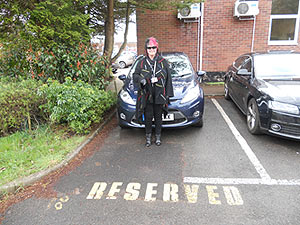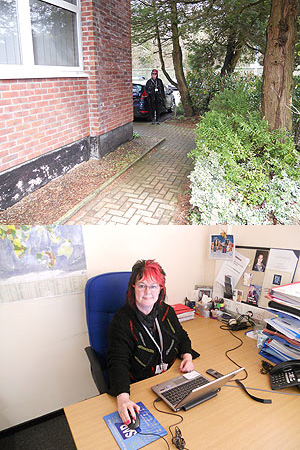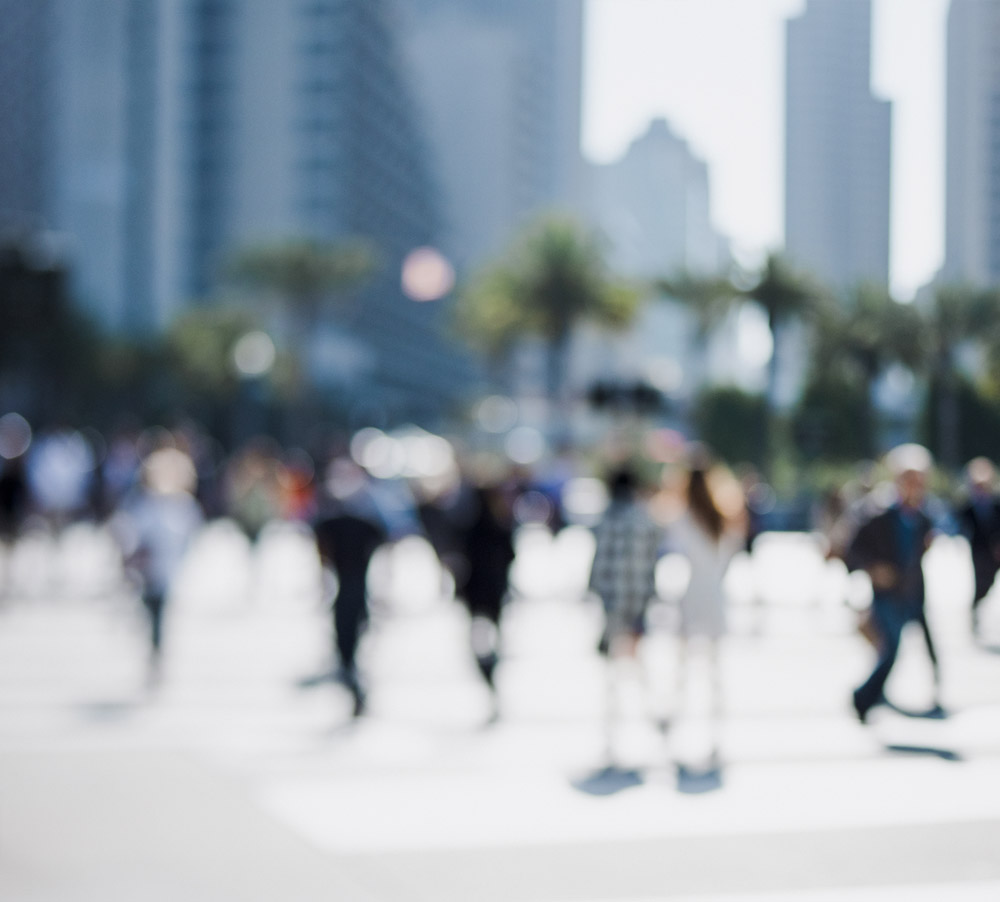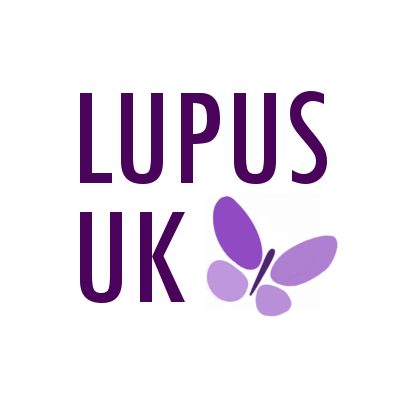Members Write
members write
My name is Diane West. I live in South Wales, and work full time in a Shared Services finance team within BAE Systems, an international FTSE 100 defence, aerospace and security company.
We are a global company with transactions happening all over the world; I work on the Import/Export Control side, which is an important area for the company. This is the story of how I have learnt to manage working with my lupus SLE condition since it was diagnosed in 2007, with the support of my family, my employers and my colleagues.


MY DIAGNOSIS
I first started to feel unwell while on a trip to Italy for work at the end of 2006. I was taken to hospital there, where they found I had low blood sugar so was put on a glucose drip. When I returned to the UK I underwent tests for diabetes originally, but after other classic symptoms developed – butterfly facial rash, hair loss, mouth ulcers, nausea, joint pains and fatigue – it wasn’t long before the lupus diagnosis was made.
THE TREATMENT
I was given the advice that lupus sufferers are well aware of: limit light exposure, cover up and only go out when necessary. I started taking anti-malarial medication, Hydroxychloroquine sulphate, a steroid – Prednisolone, and aspirin (for Hughes ‘sticky blood’ syndrome). In addition, for my skin I use Dermol cream, sunscreen, and camouflage cream and powder. For my sore, dry, gritty eyes I use a liquid gel. More recently after presenting with bone pains, I was tested for vitamin D deficiency, and I now take vitamin D supplements to help.
SUPPORT FROM MY COMPANY
Although I followed my consultant’s and GP’s advice I was unwell when at work and the symptoms did not appear to subside. LUPUS UK had some helpful leaflets available online, one of which gave information on light sensitivity both outside and inside. Following the advice given in an article in LUPUS UK News & Views magazine on the subject of declaring a disability, I spoke to my line manager at work, my Head of Department and then Occupational Health. The difference these conversations made to my ability to manage my condition has been outstanding.
members write
Who knows what the future will hold? I can no longer travel abroad due to my condition – ironic given my role as an Import/Export Controls Lead Practitioner specialising in international trade compliance! But the changes to my working environment plus the understanding of BAE Systems, my colleagues and of course my family mean that I come to work every day feeling safe, fairly stress free and able to concentrate on my job.
members write
ECLIPSE MEMBERSHIP: CONTACT/MAILING LIST
There is always a very positive response to the stories of Eclipse members with people saying that they had felt so isolated, not realising there were others who shared the same predicament. We hope that other members will be encouraged to send an account of their experiences for the Eclipse page in News & Views and for the Eclipse website. (Please send them to LUPUS UK National Office at St James House, Eastern Road, Romford RM1 3NH)
Also, for those members who feel isolated, don’t forget that you can request a (regularly updated) Contact List from LUPUS UK National Office with the names of other members who are happy to be contacted, with their telephone numbers and e-mail addresses where applicable. If you have times when it is convenient or inconvenient to be contacted, please ask for this to be included in the Contact List. All LUPUS UK members with severe light sensitivity are advised to have their names included on the Members List even if they do not wish to have their details made available on the Contact List as we occasionally send information to members specifically related to light sensitivity and as a sizeable group we can gain more recognition of our problems.
Brenda Ryder

members write
LIZ’S STORY OF LIGHT SENSITIVITY
Three years ago, then aged 36, I failed to recover as expected following a chest infection and pleurisy. I suffered severe fatigue, muscle pain and weakness, dizziness, digestive problems, chest pain, neuralgia and visual problems. I was referred to a specialist who conducted a battery of tests, finally concluding there was nothing wrong with me and suggested counselling may be helpful! After a year of feeling increasingly unwell, with new symptoms joining forces with the now familiar ones, I was diagnosed with M.E. Nearly a year later I began seeing a rheumatologist as I was ANA positive and lupus began to be suspected.
In March 2005 I spent several hours gardening on a cold but sunny spring day. That evening my face seemed to be very sunburnt and over the next week or two I realised I had become extremely sensitive to various forms of light. I felt constantly nauseous and sunburnt just being at home in my south facing house. I was unable to go out in my car and virtually any public building I attempted to go in would trigger the same reaction: shivering, head pain, skin rash, vomiting and sinus problems due to fluorescent and halogen lights. A lupus flare began which continued until light levels reduced around November when life became a little less restricted. The light sensitivity defined my ‘mystery illness’ as now being definitely lupus so it was a kind of double blow.
My initial reaction was one of total devastation, unable to imagine a future with such a restriction placed upon my life. My main concern was, and continues to be, how to prevent my 5 year old daughter’s life and happiness being curtailed due to my limitations. I was no longer able to do the school run, attend assemblies or stay for reading practice as I always had, couldn’t take her swimming, for picnics, days out or even play in the garden together. I have been fortunate to have some help from family and friends, and a combination of steroids, plaquenil and sunscreens have all helped to an extent but light remains a real problem to my health and everyday life.
The isolation that light sensitivity causes has been particularly difficult to come to terms with as we are, fundamentally, excluded from normal life. Prior to having a child, I worked as a psychiatric nurse but am now unable to work in any type of job due not only to lighting but also computers, which can easily lead to a sense of feeling redundant and loss of confidence. I have particularly struggled with the necessity of always wearing a hat and generally being bizarrely overdressed although maintaining a sense of humour has helped!
This remains an as yet rare and little known condition but continues to be a huge disability for those of us experiencing it to this degree. It would be very helpful if information could be shared between members of the Eclipse Group, particularly in relation to treatments and different strategies, helpful or otherwise. Perhaps we could support one another via the telephone, especially on those endless sunny summer days! I continue to hope that awareness will be increasingly raised about this, and other light sensitive conditions, in order that we will be allowed the same access to public buildings that anyone with a disability should rightfully enjoy.
Liz is an Eclipse member living in West Yorkshire
members write
HELEN’S STORY OF LIGHT SENSITIVITY
Helen from West Sussex wrote to Eclipse, the Light Sensitivity Support Group. “I’ve got great comfort reading the ‘reader stories’ so have sent mine and hope it will help others in the same boat”.
I was diagnosed with antiphospholipid syndrome two years ago, despite being told for 13 years I did not have it – I am awaiting referral to a lupus specialist to confirm that it is also lupus. As a child I bled from anaemia, had aching joints, abdominal rashes, fatigue and ulcerated mucous membranes with digestive troubles. It vanished when I went to live in Africa and took quinine for malaria. When the quinine was stopped shortly before returning to the UK I developed a butterfly rash, then ear infections and chest troubles.
Then, back in the UK, during my teens I developed headaches with fatigue. We went to live abroad again, this time in a malaria-free zone, my illness worsened with utter fatigue, joint pains and occasional facial sun-rash. I was told it was acne and vision problems (but had 20/20 vision?), Then sensitivity to fluorescent lights appeared when I began to work under them. I had several convulsion-type episodes at VDUs and began to get facial swelling and visual disturbances.
Throughout my twenties, back in the UK, the symptoms became chronic and I also became feverish and lost weight. After giving birth in my late twenties I could not stand fluorescents at all, they made me nauseous. Many lupus symptoms appeared, with recurrent bronchitis and ulcers.
Now fluorescent lights make me itch, sweat, go hot, and my face flushes. After cumulative exposure lupus symptoms develop. Not to mention the aching bones, joints and eyes/head! Then the fatigue hits, and takes weeks if not months to go.
So now I have given up work, and cannot do any courses or hobbies under those awful lights. Personally I feel they, and halogens, should be banned. Luckily there is one good yoga teacher who has all the lights off for me – it is a godsend as otherwise I would be socially isolated. Also I wear Irlen glasses; they are tinted blue and screen out certain wavelengths. This means I can now watch television without getting dizzy spells or nausea and the glasses have helped with driving, especially on bright days.
It is only since contacting others in the same boat that I avoid isolation and remain sane. Before realising what was wrong, I began to feel panicky in certain situations. Now I understand it is visual overload and close my eyes until the brain recovers. Light sensitivity curtails lives.
members write
LIGHT AND PATCH TESTING AT ST JOHN’S DERAMTOLOGY DEPARTMENT
For a long time I was interested to find out more about my light sensitive condition but the prospect of travelling to London from the Isle of Wight appeared too daunting. Increasingly I felt I needed more specialised advice and my doctor was obliging in requesting a referral though I had misgivings about coping with this venture.
There was to be an initial appointment with a dermatologist who collected details of my medical history. Travelling by car has become more manageable since our side and back windows have been darkened to the full extent and we have a concertina car window screen between the front and back section of the car. When we arrived at St Thomas’ Hospital we found there was an undercover parking area. From this we proceeded to the Photobiology Department where the fluorescent tubes and windows are screened to filter out UV and there is the possibility of pulling down amber blinds to afford further protection.
A booking was made for light testing which involved tests on the Monday followed by an assessment and consultation on the Wednesday. As we live a considerable distance from the hospital, we were told we could be accommodated in the Simon Patient Hotel; me, the patient, for free and my husband at a very reasonable daily tariff. Also there was the kind offer that we could travel there on Sunday evening. On the first morning as I sat in the dining room having breakfast, looking across the Thames at the Houses of Parliament and Big Ben, an American sounding patient said to me enthusiastically, ‘Gee, you would pay £200 a night for any other hotel in London with this view.’ The care and service provided at the Simon Patient Hotel was excellent; every staff member we encountered went out of the way to make our stay comfortable.
However, because it is not to be expected that a general establishment can make provision for severe light sensitivity, I took the precaution of packing opaque black bin liners, blu tac and masking tape, because, although I was told I could pull the curtains, this would not have provided sufficient protection. Also I was pleased I packed a small tungsten lamp because the rooms have fluorescent wall lamps.
The tester at the light testing unit invited my husband to accompany me (very useful to have someone else to remember details) and explained the procedure in a clear and reassuring manner. Numerous circles were drawn with a pen on my back and six squares on my arm and I was exposed to light of different frequencies and for different lengths of time. Any reaction is noted and the patient is told to return on the Wednesday because some reactions are delayed.
A further series of tests was booked to investigate reactions to chemicals. The combination of UV with some sunscreen ingredients can exacerbate the reaction to light in some individuals so a light sensitive patient can be making life more difficult for herself/himself. On the Monday a consultant discussed my past history of reactions to various substances and selected a suitable range for testing. Again we were sent to a helpful tester, this time in the Contact Clinic, who explained the procedure thoroughly. The chosen substances were applied to small circular discs taped to my back, with the instruction not to get the back wet (a great deprivation in the hot weather).
On Wednesday I returned to have the results checked and then had light directed onto some of the substances to see if there was a reaction when light was combined with a chemical. There was a final assessment on Friday.
During my stay at the Simon Patient Hotel, I went out for an evening walk with my husband, kitted out in mask, sunglasses, head scarf, hat, gloves. I waited outside while he went into a supermarket with blazing fluorescent lights (not even my gear can cope with that).
Lost in thought, I looked up to see myself surrounded by three burly policemen and one asked if I was alright. I explained I was a light sensitive patient from St Thomas’ Hospital – not a suspicious character – and was waiting outside the brightly lit shop for my husband. One of the policemen admitted, ‘Well, we did wonder.’
I had to chuckle. If I was a suspicious character, I wasn’t being very subtle about it.
Brenda Ryder
